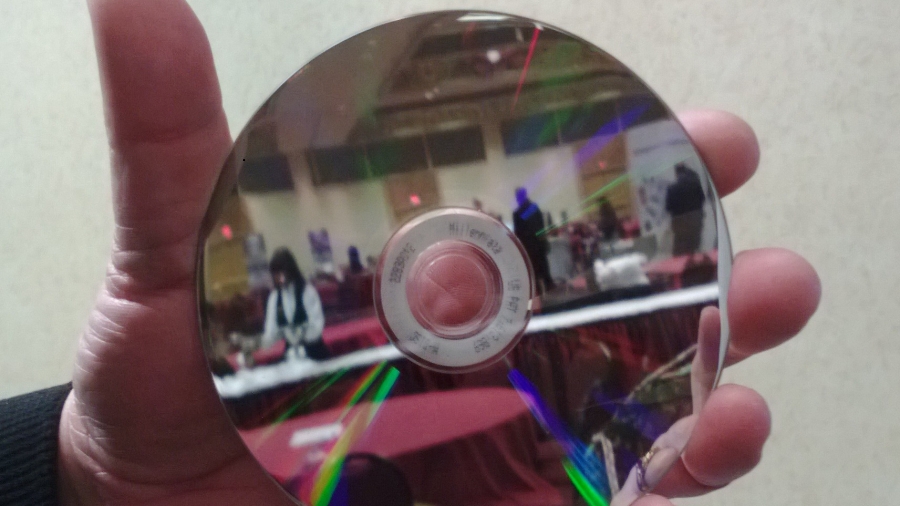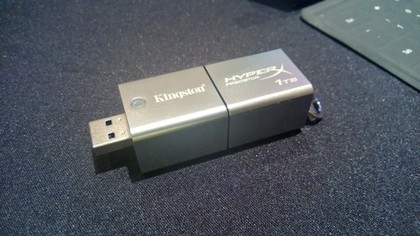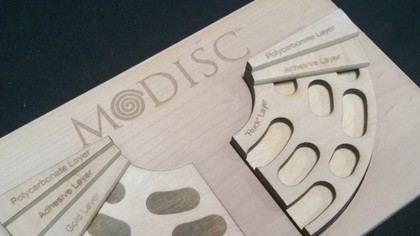The future of storage at CES
This is the year of the self-encrypting drive and the solid state drive

While consumer goodies take up most of the space at the Consumer Electronics Show, the sharp eyed can spot some storage offerings that could prove enticing to plenty of businesses over the coming year.
One of the apparent trends was that the falling costs and rising capacity of solid state drives (SSDs) is making them more relevant as desktop and server machines when you need storage speed to keep up with the processor and memory just as much as on a laptop.
Self-encrypting drives (SEDs) are also proving important. They can ensure your data is protected, even when you move a drive from one machine to another, send a server out for repair or retire a drive. The master key is generated in the factory and the encryption keys are generated by the drive controller, so they never leave the drives.
Cryptographic erase replaces the key, making all the data on the drive inaccessible without having to do a secure wipe. Because this is done at such a low level, just before the bits are written to flash, SEDs don't interfere with other processes running against your storage like data loss prevention or rights management (or back-up).
These two trends are coming together, and moving from mobile devices to servers. Toshiba has already offered SSDs in the 3.5-inch and 2.5-inch form factors that fit standard drive bays, and now it's adding SSDs for servers that are also self-encrypting drives. Now it is offering SEDs, for use with mid range servers, up to 480GB capacity and the PX02SMQ/U series includes 400GB, 800GB and 1.6TB drives.

If you want 1TB in a much smaller and more portable form factor (although without the encryption), Kingston used last week's CES exhibition to show off prototypes of its 1TB USB stick. Somewhat larger and chunkier than current USB sticks, it's still extraordinarily small for something with so much storage, thanks to a new method Kingston has come up with for stacking the layers of flash memory. Also, despite the drive size it's fast, with 240Mbps read speed and 160Mbps write.
A physically smaller 512MB version will be out by the middle of February and the 1TB model will ship this spring (prices are not yet set).
Sign up for breaking news, reviews, opinion, top tech deals, and more.
To get the speed of an SSD without the cost, Buffalo is adding fast memory to a standard hard drive. The Drive Station DDR is a 1TB, 2TB or 3TB USB 3 external hard drive, but as well as the usual 32GB of cache for the Western Digital drive inside the enclosure it has 1GB of DDR 3 RAM that it uses as a buffer.
It's not a predictive or selective cache; it simply speeds up every write you make (and writes are still the slower task on hard drives). That means you don't need to load any special software or drivers, so it works in any system with a USB 3 port, whatever the OS.
Buffalo is claiming that the Drive Station DDR is 2.8 to 3.5 times faster than a hard drive alone, priced at a modest premium over a standard external drive. Writing to fast DDR then having the controller copy that data to the hard drive means your PC gets on with the next thing faster. You're also unlikely to lose data, even if you unplug external drive; it only takes another five to seven seconds to finish writing 1GB of files to the hard drive, and the Drive Station DDR is in a desktop enclosure with a power cable you'd have to unplug – and an orange LED flashing to warn you that the write isn't yet finished. (If it followed the Drive Stations DDR up with a mobile version powered over USB, Buffalo is considering adding a capacitor to protect data even if you unplug it.)
All drives fail in the end, whether they're flash, magnetic media or an optical drive (the organic ink on a DVD degrades over time). We've seen WORM drives promising very long life before, but the new M-disc etches data into a rock-like silicate layer that's claimed to last for more than 1,000 years (inspired by ancient rock carvings the inventor saw when hiking in Utah).

The discs look like DVDs and will be available in both DVD and Blu-ray formats, but with no ink layer they're transparent and highly reflective. You can store the same 4.7GB as a DVD or 25GB as a Blu-ray disc (the Blu-ray media will be available by June this year), and the 4x burn speed is similar to a consumer DVD writer. The discs will cost under $3 – which is less than most 'long life' gold optical discs.
Most Blu-ray combo drives can write to an M-disc, because the laser is high enough power to burn into the silicate layer, and they can all read them.
It's a little more complex for DVD drives. All current LG drives can burn M-discs and firmware updates for other DVD burners that turn up the power of the laser will make many compatible. And once you've burned an M-disc, you can read it in any DVD drive.
Mary (Twitter, Google+, website) started her career at Future Publishing, saw the AOL meltdown first hand the first time around when she ran the AOL UK computing channel, and she's been a freelance tech writer for over a decade. She's used every version of Windows and Office released, and every smartphone too, but she's still looking for the perfect tablet. Yes, she really does have USB earrings.